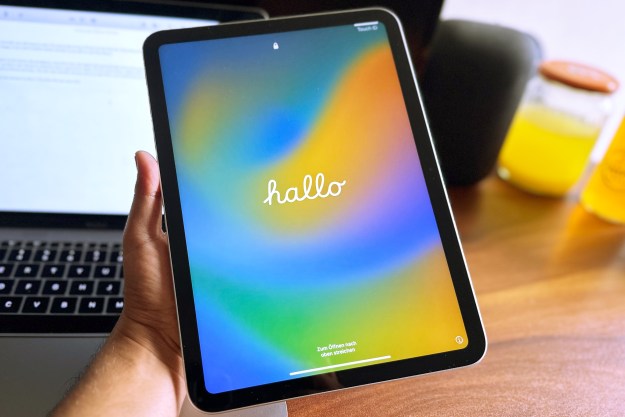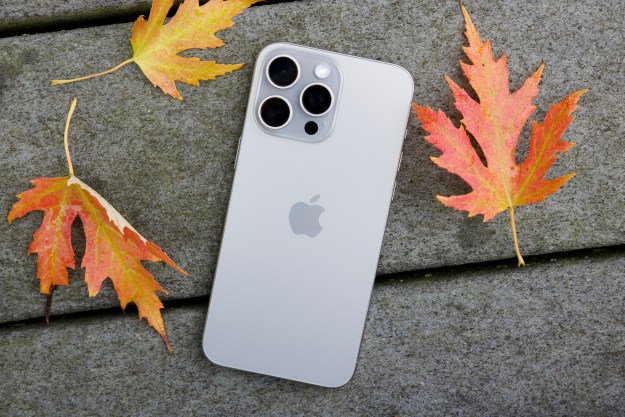At a special press event today in San Francisco, Apple Computer rolled out a complete refresh to its iPod line of personal media players—including new iPods, nanos, and shuffles in aluminum casings as well as new colors— and introduced a new version of its iTunes software. Oh, and one more thing: the company is now offering digital movies for sale via iTunes.
First, the new iPods. Apple will roll out a new edition of the iPod shufflenext month for $79, featuring an aluminum casing and 1 GB capacity and competing for the title of “smallest MP3 player” with a clip-on form factor and total size equivalent to the iPod radio remote. New iPod nanos will be available in three capacities (2, 4, and 8 GB) and five different colors (black, silver, blue, pink, and green), although the 2 GB model will only come in silver, and the 8 GB model only comes in basic black. Pricing on the new iPod nanos will be $149 for the 2 GB edition, $199 for the 4 GB edition, and $249 for the 8 GB version; all the new nanos will boast a new lanyard and armband, and they’re available today. Finally, the new “big” sixth-generation iPod will sport 60 GB ($249) and 80 GB drives ($349), sport 60 percent brighter screens, and will be able to play games downloadable from the iTunes Music Store for $4.99 apiece. Game titles are set to include Bewjeweled, Majong, Texas Hold’em, Pac Man, Tetris, and more. The new iPods also sport new headphones, “gapless” playback, and offer extended battery live (3.5 hours of video, 6.5 hours of music playing). Software updates provide for text searching capabilities and brightness controls. The catch: no word on when the 6G iPods will hit the streets, but you can bet they’ll be available for your end-of-year gift-giving season of choice.
Next, the free iTunes 7.0 offers 640 by 480 video playback resolution, revises the application interface (again!), and offers album cover lookups, If two computer are authorized to use a single iTunes account (say, a notebook and desktop system), users can now using an iPod to synchronize media between them.
Of course, the 640 by 480 resolution support in iTunes is prefatory to Apple offering downloadable movies for sale via the iTunes Store. Initial offerings are all from Disney and affiliated studios (Pixar, Touchstone, and Miramax)—no surprise, given that Apple CEO Steve Jobs is Disney’s largest single shareholder—with video prices ranging from $9.99 for catalog titles and new releases running $14.99. Movies will be available the same day as DVD releases, and will support Dolby surround audio, near DVD-image quality, and users will be able to extend iTunes parental controls to include MPAA ratings so children don’t have access to potentially inappropriate material (from Disney). Apple plans to take movie offerings international in 2007.
What’s missing from Apple’s hugely pre-hyped announcements today? First and foremost, more studio support for movies via iTunes. Amazon.com beat Apple to the punch with Amazon Unbox last week, and although industry reports put Unbox just a hair above “unusable” for an initial online video offering, Amazon.com did manage to line up about every major player except Disney. Although we’re still in the very early days of online movie downloads, selection, price, and ease of use are going to be key factors.
Second, Apple did not roll out a “true” video iPod. Although fifth (and now sixth) generation iPods will happily play video, the screens are small and its not exactly what one would call an immersive experience. If Apple wants to capitalize on online video, it should be looking to introduce a device with more screen real estate and the capability to hook up to televisions and other displays.
Third, Apple did not introduce its own “media center” solution for the living room, leaving Macintosh aficionados to turn to with non-Apple solutions like TiVo or (gasp!) Windows Media Center-driven solutions for in-home distribution of digital media (images, sound, and video).
But wait. Uncharacteristically, Jobs teased the press gathering by demoing iTV, a wireless device for the television the company plans to release in the first quarter of 2007. The iTV device will offer USB, Ethernet, and 802.11 wireless connectivity, as well as component, optical, and HDMI output for connecting to standard and high-definition displays. The iTV will work with the existing Apple Remote (shipping with many Macintosh models today) and will offer a clean, Front Row-like interface, and full compatibility with videos purchased via iTunes. The unit will be about half the size of the already-diminutive Mac mini, and—here’s the kicker—will be priced at $299.
Editors' Recommendations
- Apple’s new iPad Air could be in trouble
- Nomad’s new iPhone case and Apple Watch band may be its coolest yet
- Nomad sale: Up to 85% off cases for iPhone, AirPods, Apple Watch
- I’m worried about Apple’s new iPads
- Apple may announce new iPads next month. Here’s everything we expect


